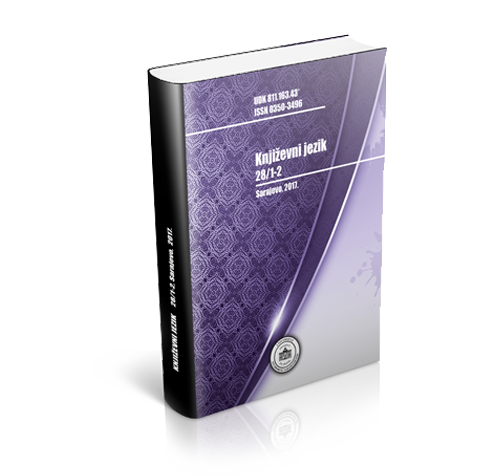RAZVOJ ZAVISNE ATRIBUTSKE KLAUZE U BOSANSKOM JEZIKU U SREDNJOVJEKOVNIM POVELJAMA
DEVELOPMENT OF RELATIVE CLAUSE IN BOSNIAN LANGUAGE ACCORDING TO MEDIEVAL BOSNIAN CHARTERS
Author(s): Zenaida KaravdićSubject(s): Cultural history, Theoretical Linguistics, Middle Ages, Syntax, Historical Linguistics, South Slavic Languages, Philology
Published by: Institut za jezik
Keywords: syntax; history of language; Bosnian language; Middle Ages; charters; relative clauses;
Summary/Abstract: The presupposed development of relative clauses went through repeating the same nouns in contiguous, but unconnected clauses, then both nouns were given the anaphoric or cataphoric pronouns, and finally the nouns or pronouns progressively were omitted from the main or dependent clause. The other possible way was turning independent questions and answers into one sentence, with transformation of question-word into a conjunction (Stecenko 1972: 219). This development of relative clauses in Bosnian language was completed before the first written monuments, where just few reminds of supposed phases of former development can be found, such as repeating the nouns, anaphoric or cataphoric pronouns, and in some cases, the relative clauses in preposition can be estimated as the remind of former questions and answers. The conjunctions of relative clauses found in charters are ki/koji, što, kto/tko, kakav, koliki, with sporadic occurrence of archaic iže and kolь. There are also implicit relative clauses and relative clauses that are introduced by object in main clause, which means that they were relatively well developed in this period.
Journal: Književni jezik
- Issue Year: 28/2017
- Issue No: 1-2
- Page Range: 7-27
- Page Count: 21
- Language: Bosnian

